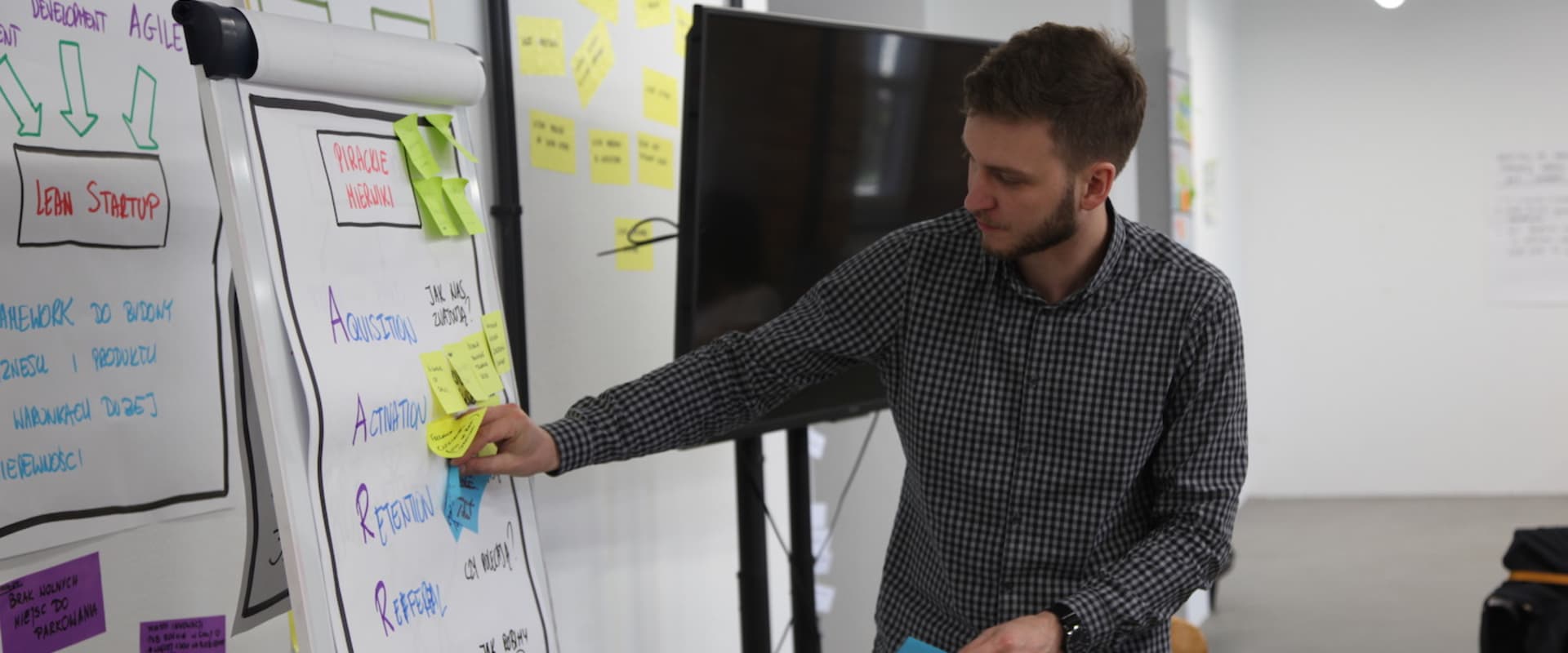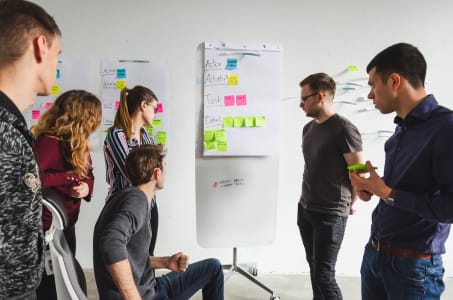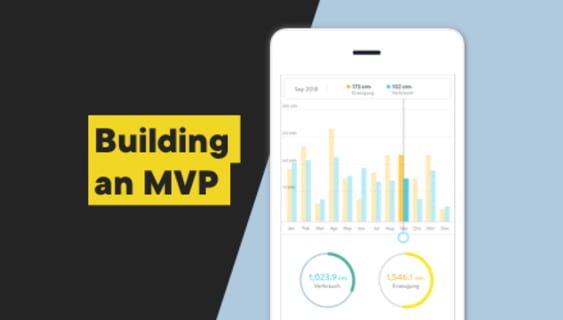Lean process for a better product
Lean startup is a methodology for developing both products and businesses. However, despite the name, this approach isn’t limited only to startups. In fact, the lean framework can be used (and it is) by any company to develop a new product for the market.

Table of contents
The Lean Startup
Proposed by Eric Ries in 2008 and published in a book “The Lean Startup”, this new approach to developing businesses has become one of the most influential methodologies in the last decade. It helps both startups and companies change the way how they think about a product and business development. The lean approach offers a new framework for testing product hypothesis with minimal cost and effort. Lean is based on five principles:
- Entrepreneurs are everywhere
- Entrepreneurship is management
- Validated learning
- Innovation accounting
- Build-Measure-Learn
For this article, I will focus on the last one. You can find more information about the lean startup in Eric Ries’ book and on his blog.
See also:
Build-Measure-Learn. Repeat and change
The lean approach encourages a fundamental shift in thinking about the product. The question is not ‘Can you build a product?‘ but instead ‘Should you build it?‘ The business graveyard is full of companies which perished because no one wanted their products. An idea, no matter how brilliant, is never enough. The idea has to be evaluated as soon as possible.
The primary question is: What value does my product offer a customer?. Here’s a clue, you’ll never know the real answer if you don’t ask the customer. To do so, you can build an MVP (minimum viable product) to test client’s real needs. However, the MVP is not a miracle cure for everything, it shouldn’t exist in a vacuum. In the lean approach, an MVP is just a stage of the whole process, nicely shortened to three words: Build-Measure-Learn.
The lean startup methodology offers a framework for testing your business or product hypothesis as a continuous, cyclical process:
Ideas - BUILD - product - MEASURE - data - LEARN - ideas -…
In this process, the BUILD stage stands for formulating a hypothesis (one or more) and criteria for evaluating it which will be tested using the MVP. The product is your MVP, available to customers, who will interact with it and give you feedback. In the MEASURE stage, you gather data in the form of previously designed metrics. The collected data will help you to LEARN customer needs more deeply, evaluate your primary hypotheses and, if necessary, change them or formulate new ones and start the process again. In some cases, based on the data, you may even consider a pivot.
One sentence can summarize this whole process: Try to learn about your client’s needs as much as possible. Learning is the core of the lean approach. Your business must be based on constant learning and adjusting.
The process described above is, by necessity, simplified. At every stage, you will need to consider many factors and use the right tools. For example, in the context of metrics, the lean startup approach distinguishes between two types: vanity metrics and actionable metrics. The first are deceptive - they may show good results but in fact, don’t measure anything that could truly verify the hypotheses.
One of the most popular examples of a vanity metric is the number of new users gained in a specific time. Every company, especially internet-based, is happy when more and more users visit their website. However, this metric can be deceptive because it doesn’t indicate the cost of acquiring each user. If the cost is higher than the revenue from each user, the company can quickly go bankrupt. Actionable metrics, on the other hand, give you genuinely useful information.
As you can see, lean startup is a framework and a guide but not a guaranteed recipe for a successful business.

The lean approach in use - Polco case
Let’s go beyond theory and look at lean startup in real life. A few years ago, Boldare was a partner with a U.S.-based company, Polco to build a platform that allows people to vote, give their opinions, and comment on policies while allowing policymakers to gather real-time feedback from citizens.
Polco had a lean startup approach to development which perfectly resonated with how Boldare thinks about digital product development. After formulating the product’s hypothesis, Boldare prepared an MVP of the platform and was collecting data about users. At the same time, Polco took the product to Harvard University students. They tested the app and gathered crucial usability data and interface feedback for over two months.
Based on feedback and data collected in this way, Boldare implemented changes to the product. But that wasn’t the end of the process. In the next iteration, the MVP was released into the real world - the first test bed was Austin, Texas. This further stage of testing helped Boldare to collect more data about users needs, learn from them and introduce more changes.
Thanks to the lean approach to product development, Polco could test their hypothesis swiftly and with limited risk. In the end, it resulted in a full product in the form of the voting platform Polco.us.
Interested in Polco? Check out our case study.
Lean approach for your product
The lean approach is just a framework but it is proven to work. It helps you to understand better your business needs, as well as your potential customer. It speeds up product development without losing focus on the ultimate goal. It is based on constant learning from data which helps you to rapidly fine-tune the product in light of user needs and market requirements. The philosophy behind the lean approach (data gathering, verifying, learning, changing and adjusting) not only works for startups or new products. It can also be used when running a business too minimize risks and meet market needs. And finally, it is also an approach which helps you build better products.
At Boldare, we use the lean approach in our process of digital product development to help our clients with their business needs.
Share this article:







